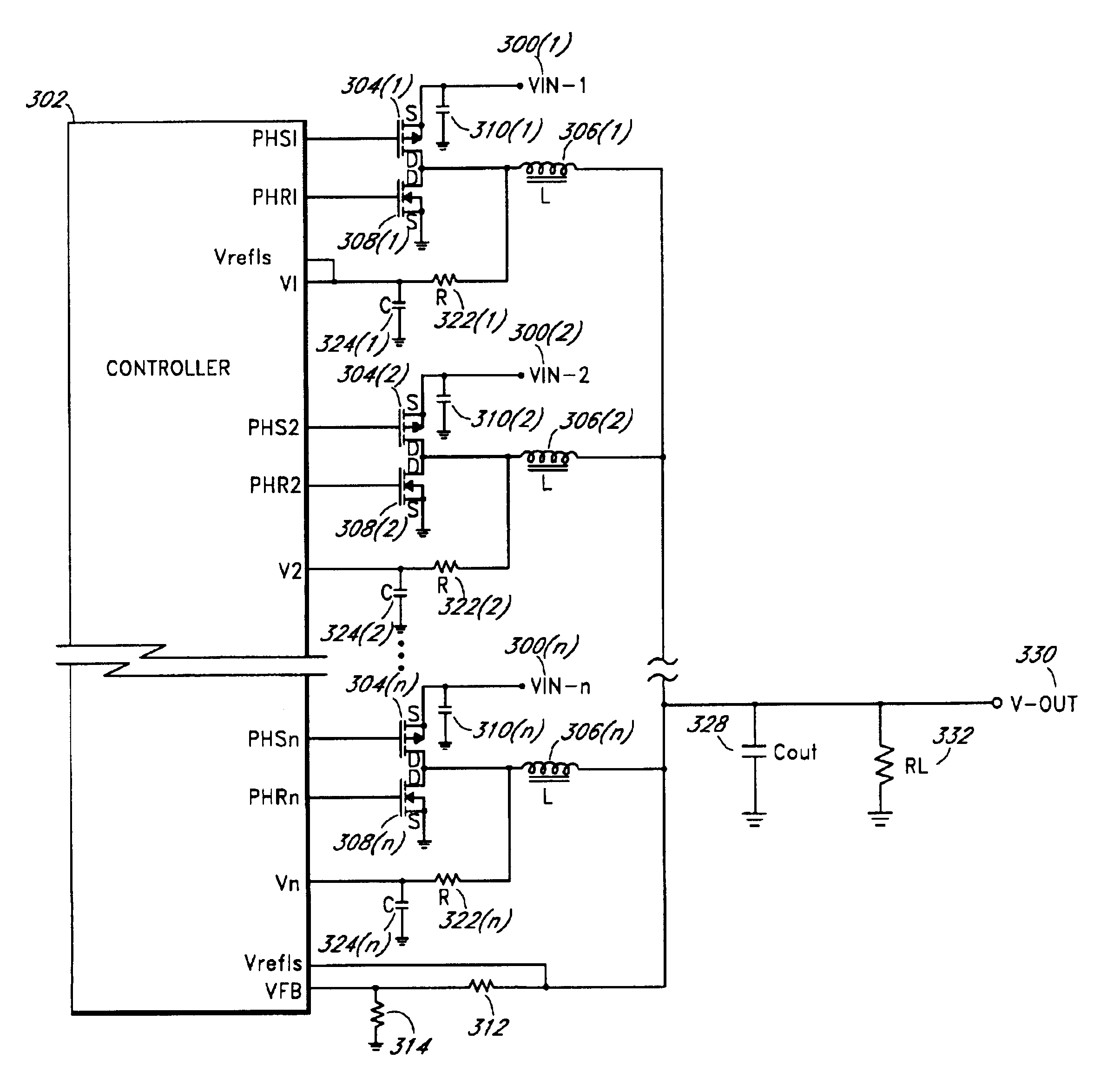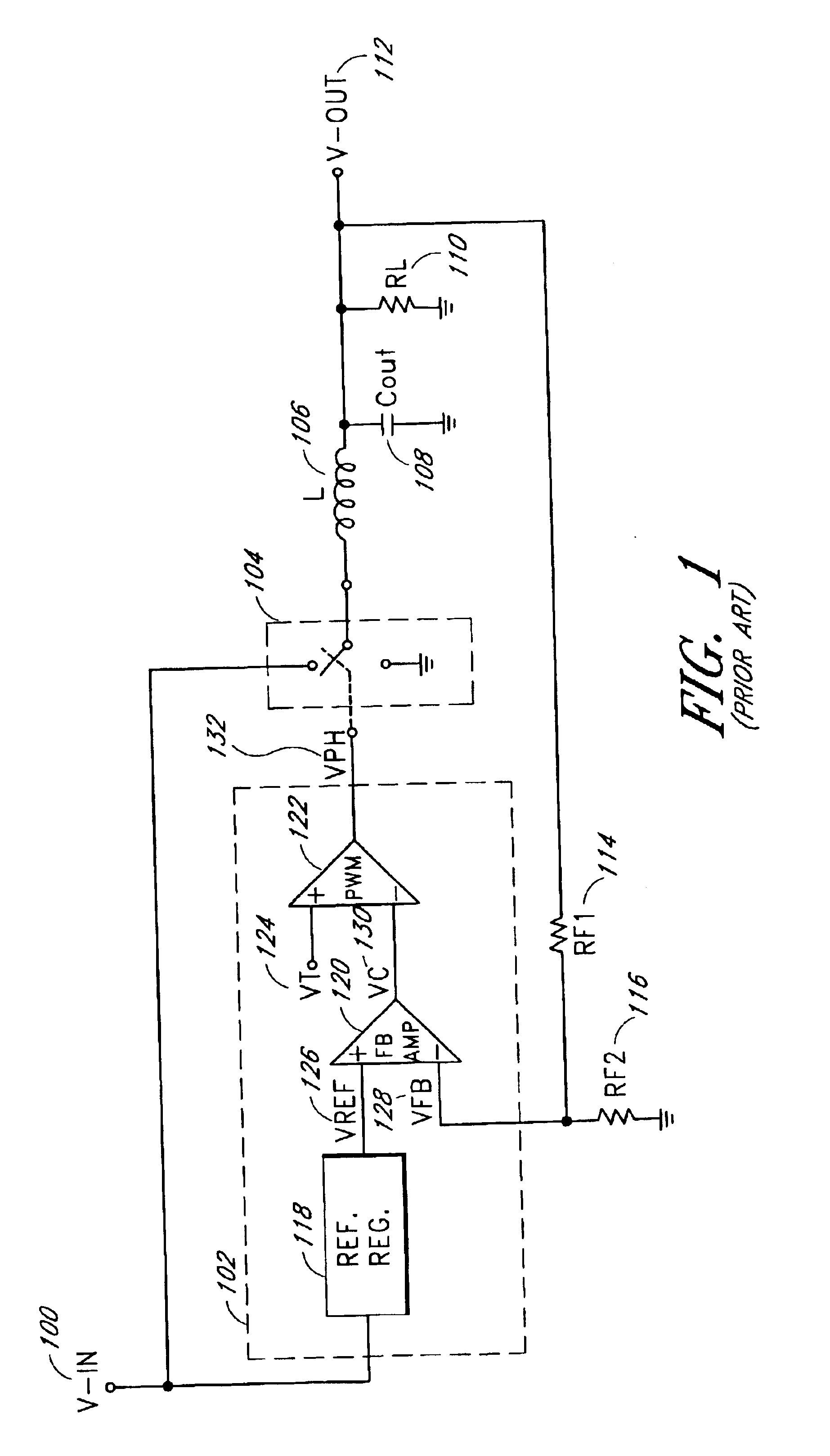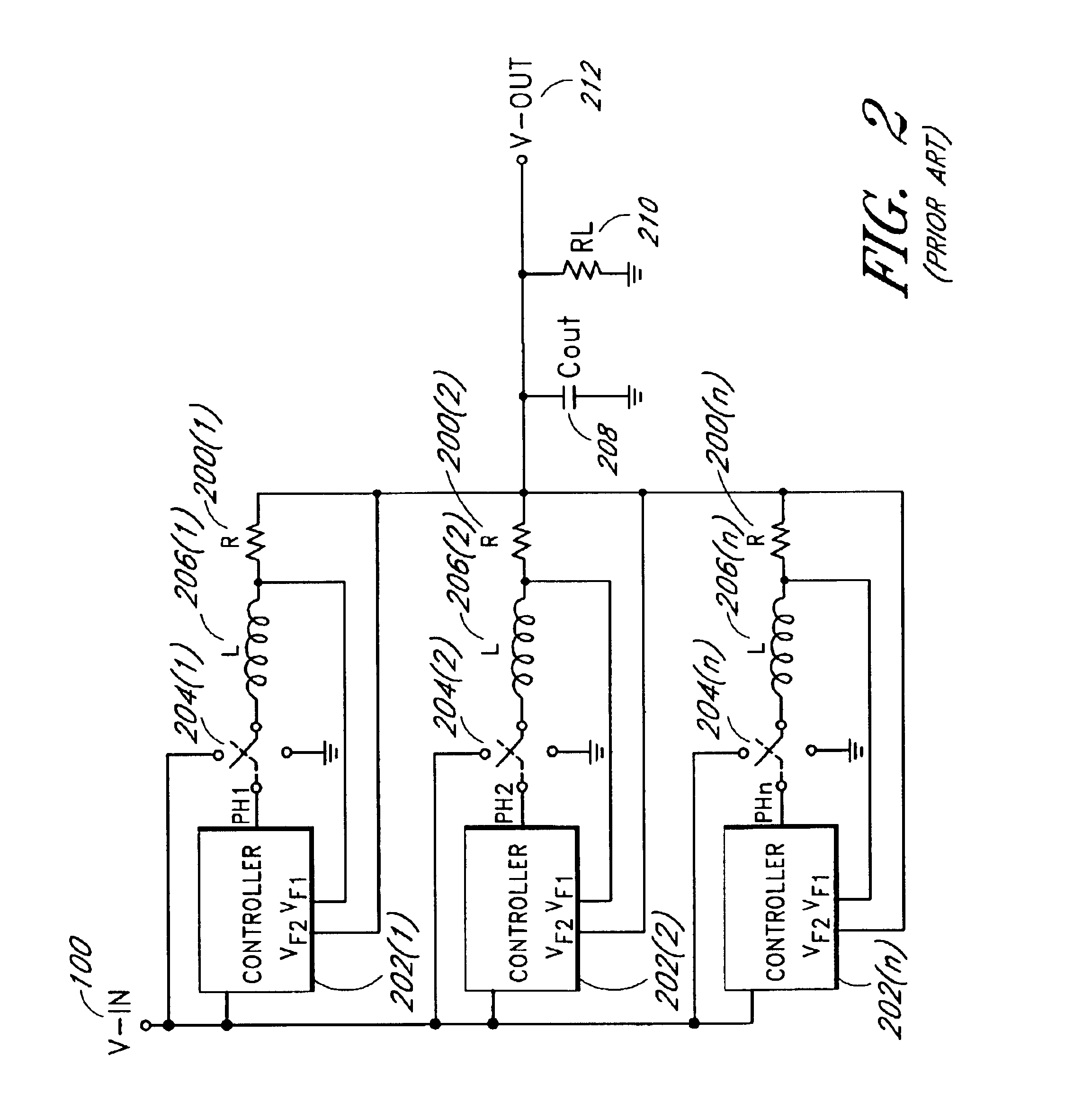Method and apparatus for load sharing in a multiphase switching power converter
a multi-phase switching and power converter technology, applied in the direction of electric variable regulation, process and machine control, instruments, etc., can solve the problems of reducing the efficiency of input voltage ripple, and reducing the size of input capacitors and output capacitors, so as to reduce cost and power loss, improve reliability, and accurately share current
- Summary
- Abstract
- Description
- Claims
- Application Information
AI Technical Summary
Benefits of technology
Problems solved by technology
Method used
Image
Examples
Embodiment Construction
[0041]FIG. 1 is a schematic diagram of a typical switching converter. A voltage source (V-IN) 100 is provided to a controller 102 and to a switch 104 to establish an output voltage (V-OUT) 112. The controller 102 includes a reference regulator (REF. REG.) 118, a feedback amplifier (FB AMP) 120 and a PWM circuit 122.
[0042]The reference regulator 118 accepts an input from the voltage source 100 and generates a reference voltage (VREF) 126. The feedback amplifier 120 compares the reference voltage 126 with a feedback voltage (VFB) 128 and generates a control voltage (VC) 130. The PWM circuit 122 generates a rectangular wave voltage (VPH) 132 based on the control voltage 130 and a triangular wave voltage (VT) 124.
[0043]The rectangular wave voltage 132 controls the operation of the switch 104 which alternately connects the input terminal of an inductor 106 to the voltage source 100 and to ground. The output terminal of the inductor 106 is coupled to the output voltage 112. An output capa...
PUM
 Login to View More
Login to View More Abstract
Description
Claims
Application Information
 Login to View More
Login to View More - R&D
- Intellectual Property
- Life Sciences
- Materials
- Tech Scout
- Unparalleled Data Quality
- Higher Quality Content
- 60% Fewer Hallucinations
Browse by: Latest US Patents, China's latest patents, Technical Efficacy Thesaurus, Application Domain, Technology Topic, Popular Technical Reports.
© 2025 PatSnap. All rights reserved.Legal|Privacy policy|Modern Slavery Act Transparency Statement|Sitemap|About US| Contact US: help@patsnap.com



